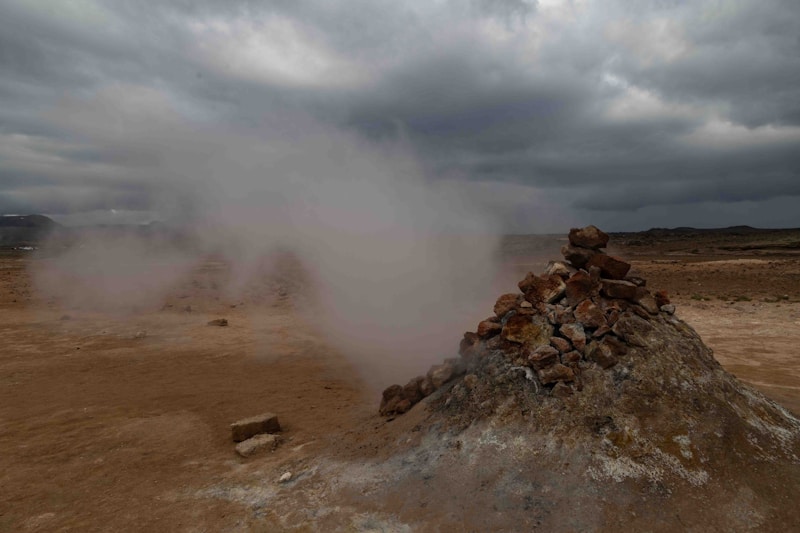9 Questions
What is the process that causes particles to settle in place and form sedimentary rocks?
What are the four groups of sedimentary rocks based on the processes responsible for their formation?
What are the three types of sedimentary rocks based on the size of their particles?
What is the main source for understanding the Earth's history?
What are the two exceptional circumstances that lead to fossilization in sedimentary rocks?
What are the two types of sedimentary structures?
What are the two types of marine sedimentary rocks?
What are the two types of continental sedimentary environments?
What is the purpose of sedimentary provenance studies?
Summary
Overview of Sedimentary Rocks
-
Sedimentary rocks are formed by the accumulation or deposition of mineral or organic particles at Earth's surface, followed by cementation.
-
Sedimentation is the process that causes particles to settle in place, and agents of denudation transport geological detritus and biological detritus to the place of deposition.
-
The sedimentary rock cover of the continents is extensive (73% of Earth's current land surface), but sedimentary rock is estimated to be only 8% of the volume of the crust.
-
Sedimentary rocks are deposited in layers as strata, forming a structure called bedding. Sedimentary rocks are often deposited in large structures called sedimentary basins.
-
Sedimentary rocks are important sources of natural resources including coal, fossil fuels, drinking water, and ores.
-
The study of the sequence of sedimentary rock strata is the main source for understanding the Earth's history, including palaeogeography, paleoclimatology, and the history of life.
-
Sedimentary rocks can be subdivided into four groups based on the processes responsible for their formation: clastic sedimentary rocks, biochemical sedimentary rocks, chemical sedimentary rocks, and a fourth category for "other" sedimentary rocks formed by impacts, volcanism, and other minor processes.
-
Clastic sedimentary rocks are composed of rock fragments (clasts) that have been cemented together and are subdivided according to the dominant particle size.
-
Biochemical sedimentary rocks are created when organisms use materials dissolved in air or water to build their tissue.
-
Chemical sedimentary rock forms when mineral constituents in solution become supersaturated and inorganically precipitate.
-
Sedimentary rocks are formed when sediment is deposited out of air, ice, wind, gravity, or water flows carrying the particles in suspension. Older sediments are buried by younger sediments, and they undergo diagenesis, which includes all the chemical, physical, and biological changes undergone by a sediment after its initial deposition.
-
Sedimentary rocks have properties such as color, texture, and mineralogy, which are determined by factors such as iron content, organic material, and clast size and form.Sedimentary Rocks: Fossils, Structures, Environments and Facies
-
Sedimentary rocks form at temperatures and pressures that do not destroy fossil remnants, making them the most common type of rock to contain fossils.
-
Fossilization occurs under exceptional circumstances, such as high sedimentation rates, anoxic environments, or organisms with hard skeletons.
-
Sedimentary structures can be primary (formed during deposition) or secondary (formed after deposition), and can be indicative of the sedimentary environment.
-
Primary structures include bedding, lamination, cross-bedding, graded bedding, ripple marks, sole markings, and mudcracks.
-
Secondary structures include trace fossils, diagenetic structures, and physical deformation of sediment.
-
Depositional environments include marine (deep and shallow), coastlines, deltas, and continental (lakes, swamps, etc.).
-
Sedimentary facies are the type of rock formed in a particular depositional environment, which can shift over time, resulting in changes in facies in the subsurface.
-
Marine environments can form carbonate rocks in warm, shallow waters, and fine clay or micro-organism skeletons in deep waters.
-
The coast is dominated by wave action, and sediment is deposited based on density and size, with denser sediment like sand or gravel being deposited at beaches.
-
Continental environments include lagoons, lakes, swamps, floodplains, and alluvial fans, with sediment being transported by water, wind, or glaciers.Overview of Sedimentary Rocks and Environments
-
Facies can be distinguished by lithology or fossil content.
-
Sedimentary environments can shift their geographical positions through time.
-
Transgression is when coastlines move in the direction of the continent, and regression is when coastlines move in the direction of the sea.
-
Sedimentary basins are places where large-scale sedimentation takes place.
-
Basin types include rift, sag, fore-arc, and back-arc.
-
Cyclic changes in sediment supply and the sedimentary environment are caused by astronomic cycles.
-
The rate at which sediment is deposited differs depending on the location.
-
Sedimentary rocks contain important information about the history of the Earth.
-
Provenance is the reconstruction of the origin of sediments.
-
Sedimentary rocks can be the source of sedimentary detritus.
-
Sedimentary provenance studies reconstruct and interpret the history of sediment.
-
The purpose of sedimentary provenance studies is to reconstruct and interpret the history of sediment.
Description
Test your knowledge on sedimentary rocks and their formation with this quiz! From the processes of sedimentation to the various types of sedimentary rocks and environments, this quiz covers it all. Learn about the importance of sedimentary rocks as sources of natural resources and as a means of understanding the Earth's history. Test your understanding of sedimentary structures, depositional environments, and sedimentary provenance studies. Whether you're a geology student or just a curious learner, this quiz is a great way to

